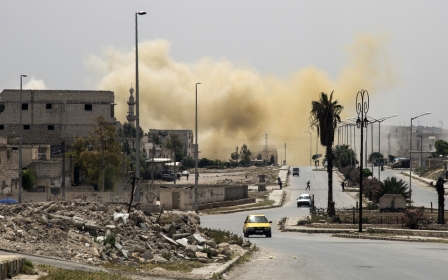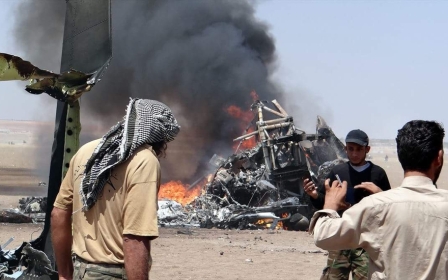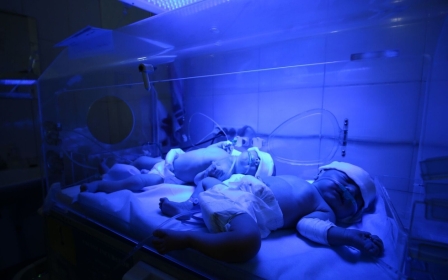Dozens of civilians hit with toxic gas in Syria: White Helmets
More than 30 Syrian civilians have been affected by a toxic gas attack carried out on a town close to where rebel forces shot down a Russian helicopter, a Syrian rescue service said.
A spokesman for the Syrian Civil Defence Force, known as the White Helmets, released a statement on Tuesday saying that 33 people, mostly women and children, were sickened in the apparent chemical attack.
The group also released footage showing casualties struggling to breathe and being given oxygen masks by people in civil defence uniforms.
Initial reports, posted on Twitter by the White Helmets chief late on Monday, initially said 25 people were sickened in the attack, shortly after rebel forces downed a Russian helicopter nearby, killing five Russians.
The attack allegedly took place in the city of Saraqeb, in the rebel-held province of Idlib where the White Helmets have operated since the Syrian civil war began.
It remains unclear what type of gas was used in the attack but the White Helmets said it suspects chlorine.
It remains unclear who released the agent, but various social media users claiming to be in Saraqeb suggested it was retaliation by the Syrian government for the shooting down of the Russian helicopter.
Monitors at the Syrian Observatory for Human Rights, which tracks violence on all sides in the civil war, also reported that a number of civilians were wounded in barrel bombs attacks on Saraqeb late on Monday.
The Syrian National Coalition (SNC), an umbrella opposition group, accused President Bashar al-Assad of being behind the gas attack. Assad has previously denied allegations that he has used chemical weapons on civilians.
The SNC in a statement translated by Reuters said: “After shelling, besieging and killing civilians and perpetrating war crimes on them, the Assad regime has resorted once again, and in breach of UN resolutions 2118 and 2235, to using chemical substances and toxic gases.
“The daily reality confirms that all the international agreements and previous Security Council decisions, be they about chemical weapons or otherwise, are meaningless for the Assad regime.”
A spokesman for the White Helmets on social media said that it was the second time Saraqeb had been hit by toxic gas. The group said it was aware of nine suspected chlorine gas incidents across Idlib province since the conflict began.
The Syrian government agreed to hand over its cache of chemical weapons for destruction after the US threatened the government with a military strike in 2013.
This agreement, however, only covered Sarin, Mustard and VX nerve gas, alongside the precursor chemicals which could be used to make them. The agreement did not include chlorine and ammonia, which has a wide array of civilian uses but can also be weaponised.
Chlorine is used to make drinking water safe and to treat swimming pools. Large amounts of chlorine are used in many industrial processes, such as in paper products, plastics, dyes, textiles, medicines, insecticides, solvents and paints.
In 2014, both the United States and France claimed to have seen "raw" information that chlorine had been used by Syrian government forces in rebel-held areas and that the incidents would constitute a violation of the chemical weapons convention that Syria signed in 2013.
Possessing chlorine is not a violation of the agreement signed by Syria, but the convention on chemical weapons bans the use of all chemical weapons.
New MEE newsletter: Jerusalem Dispatch
Sign up to get the latest insights and analysis on Israel-Palestine, alongside Turkey Unpacked and other MEE newsletters
Middle East Eye delivers independent and unrivalled coverage and analysis of the Middle East, North Africa and beyond. To learn more about republishing this content and the associated fees, please fill out this form. More about MEE can be found here.




